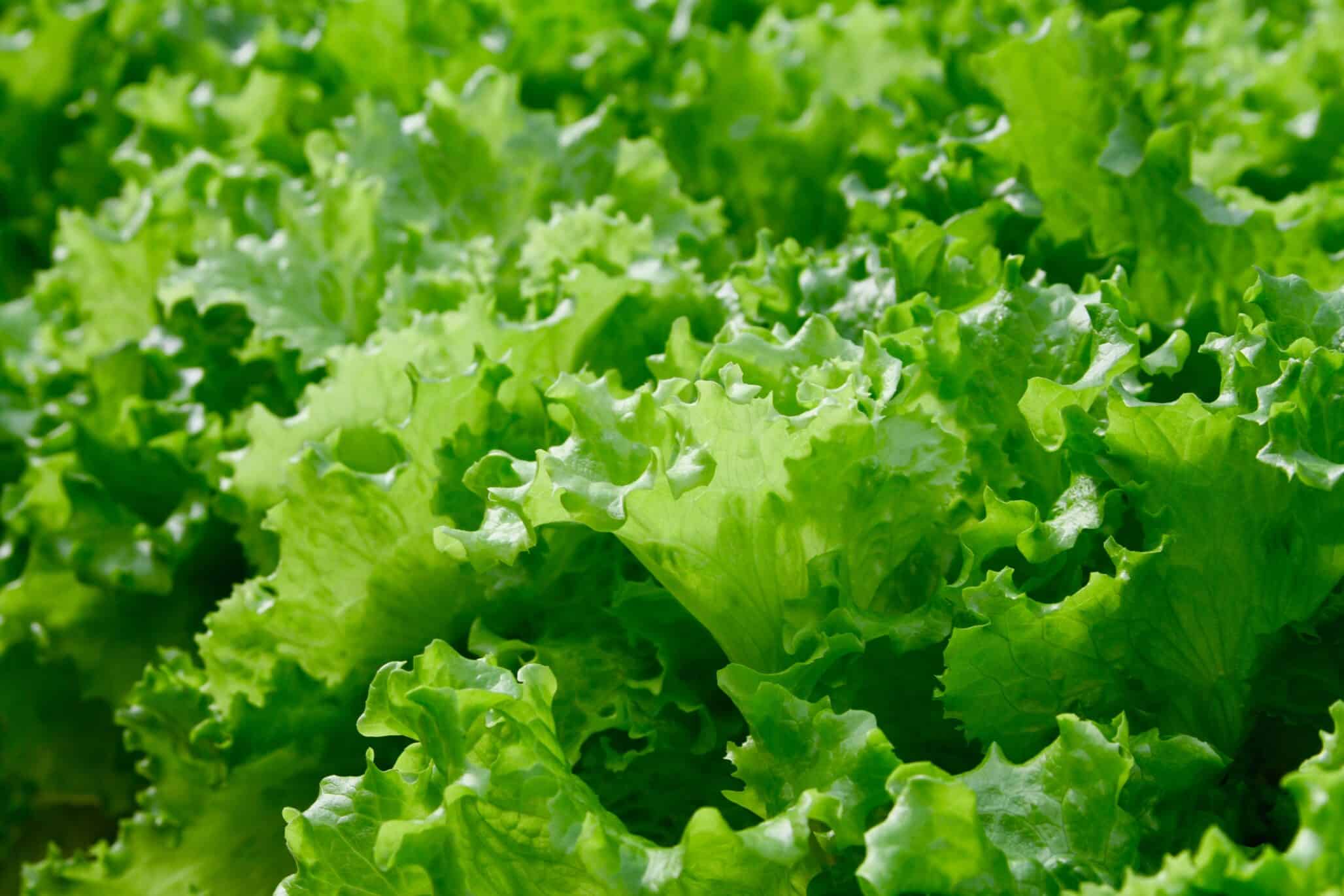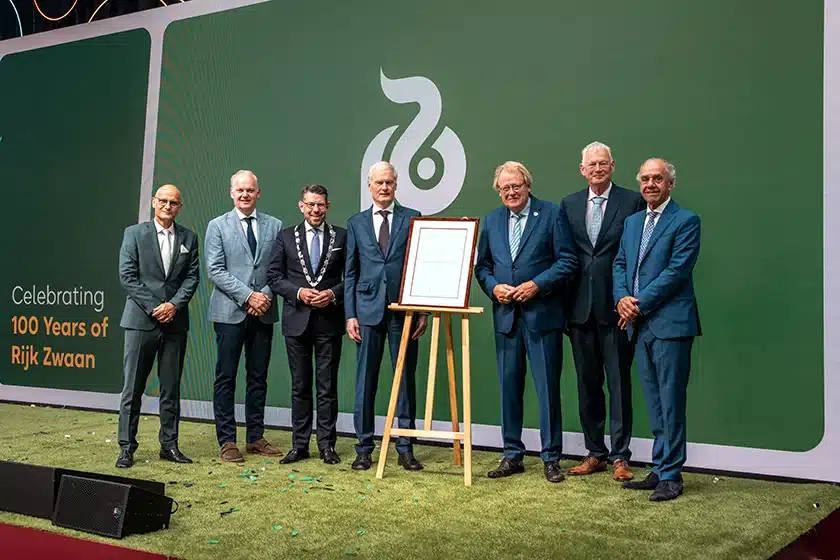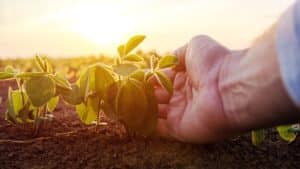A close look at lettuce breeding and its challenges – Part 2: Regulatory and Innovation
In each issue, European Seed takes a closer look at one of the many crops that European plant breeders are working on. In our November issue, we put lettuce in the spotlight and contacted leading breeders to learn about breeding goals and challenges— Read Part 1 Here! Part 2 focuses on regulatory challenges, access to genetics and innovation. The industry experts are: Olaf Zonneveld, Global R&D Crop Lead Salads, Syngenta Seeds; Roel Veenstra, Crop Research Manager, Bejo Zaden; Alfonso García, Lettuce Breeder, Meridiem Seeds; Johan Schut and Jair Haanstra, Lettuce Breeding Managers, Rijk Zwaan; Lisa Zaccaria, Lettuce Breeder, Maraldi; Gowtham Prakash, Pre-Breeder leafies and Peter Visser, R&D Crop Technical Lead for leafies, artichoke, okra, asparagus and celeriac, BASF Vegetable Seeds.
The future for lettuce looks bright in terms of consumer demand. According to Visser, consumption of this vegetable is growing slowly in all parts of the world, and Zonneveld names Russia, Ukraine, India, and South-East Asia as particular areas where growth is increasing.
[tweetshare tweet=”The future for lettuce looks bright in terms of consumer demand.” username=”a0d2d284867effb560703aea0c9437ec”]
Schut adds that lettuce consumption “generally grows in countries where the middle class is growing and becoming wealthier.”
Developing a new lettuce variety at Rijk Zwaan takes six to eight years. However, it takes double that amount of time to introduce a new trait like a new resistance gene. García explains that for Meridiem, up until a few years ago, the commercialization of a variety took up to 10 years, but the use of new biotechnological tools developed in recent years have shortened the breeding timeline significantly.
At Maraldi, six to eight years is required to develop a variety, and at BASF, the timeline depends on the maturity of the breeding program and the production system for which the variety will be developed. “The use of infrastructure needed to test new breeding lines under high tech conditions (hydroponics with additional light) is easily five to ten times more expensive than testing in open field,” explains Prakash. “Further, the extensive use of marker technology and routine disease screening facilities makes lettuce breeding relatively expensive. The development of a new variety from scratch (that is, cultural value with all required disease and consumer traits) will take seven to nine years, including pre-commercial trialing. However, in mature programs, this goes faster as the larger pieces of the variety-puzzle are often already stitched together.”
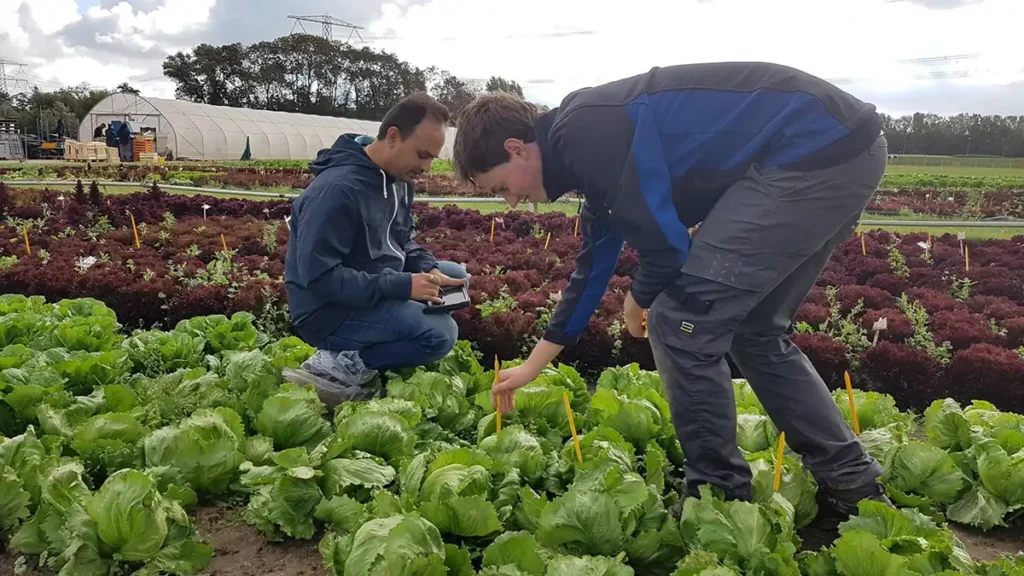
Sources of Diversity
All the lettuce breeding firms report that genes found in wild lettuce species remain a source of potential pest and disease resistance, especially for Bremia. At Maraldi and Meridiem, wild-type lettuces are also used for inheritance studies and introgression of new traits. However, García adds that “the use of these wild materials is increasingly used for the development of abiotic stress tolerant varieties in relation to drought, salinity and nutrient deficiency conditions.”
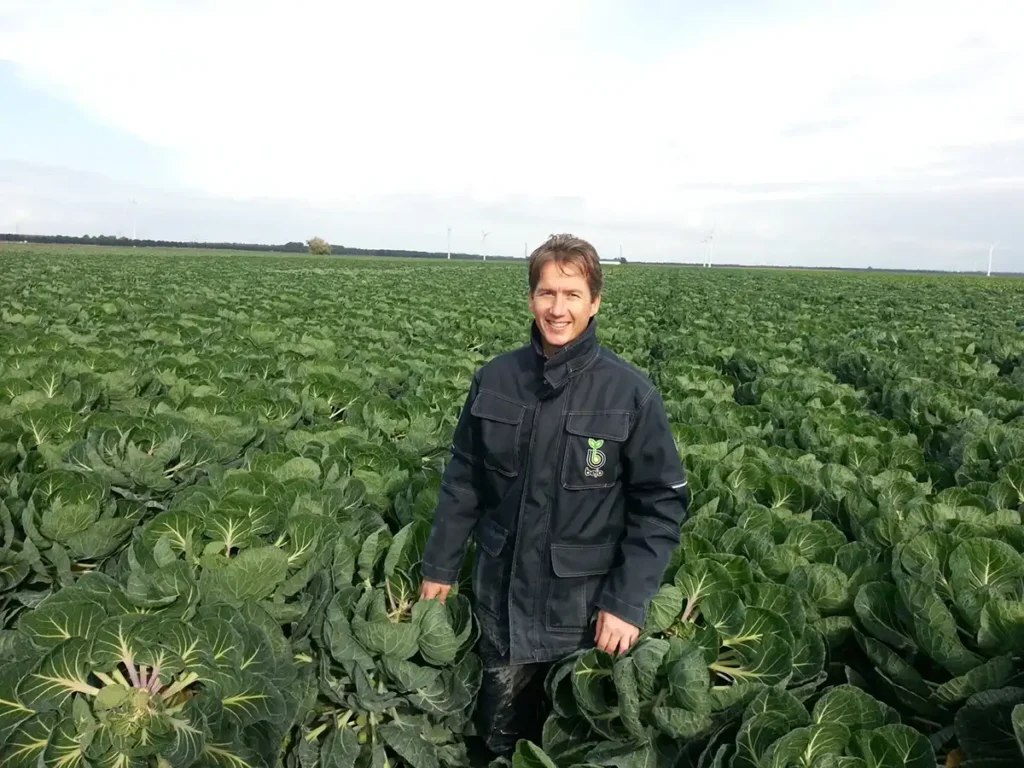
Internal company lines, other modern cultivars and gene banks make up the remainder of sources of lettuce genetic diversity at this point. In terms of gene banks, Bejo Zaden and BASF both list the Centre for Genetic Resources at Wageningen University in the Netherlands as one of importance for lettuce. BASF also, on an as-needed basis, procures selective accessions from INRA France, IPK Germany and U.S. Department of Agriculture ‘GRIN.’ Meridiem’s lettuce breeding program is mainly based on germplasm from the U.S., which provides Meridiem with genes related to rusticity, size and productivity; this material is crossed with genetics from Europe to strengthen resistance to mildew and other diseases. García explains that “our main source of germplasm is derived from the generation of segregating populations obtained by using lines and varieties of commercial interest.”
[tweetshare tweet=”Wild lettuce species are an important source of potential pest and disease resistance and are increasingly used for the development of abiotic stress tolerant varieties.” username=”a0d2d284867effb560703aea0c9437ec”]
As to whether access to new germplasm has been made more difficult because of the new regulations on access and benefit sharing (ABS), no issues are reported by Syngenta, BASF or Maraldi. Veenstra at Bejo Zaden notes that while he and his colleagues cannot complain about access, the ABS regulations have required much more paperwork, time and money to stay compliant. Rijk Zwaan’s Haanstra agrees that the current amount of administrative work requires a lot more time and attention.

Pressure on Breeders
And, while some resistance genes for various diseases and pests of lettuce are being incorporated into new varieties on a continual basis, there are now fewer crop protection products for lettuce farmers. This makes growing a successful crop more challenging for them, but also obviously puts extra pressure on breeders.
Zonneveld explains that “there is growing interest in achieving aphid control through genetics. Several insecticides were very successful in the control of these insects, including neonics, and the ban of the neonics has resulted in a more challenging situation for lettuce growers.”
[tweetshare tweet=”The ban of the neonics has resulted in a more challenging situation for lettuce growers.” username=”a0d2d284867effb560703aea0c9437ec”]
Rijk Zwaan customers have requested more disease resistance in lettuce varieties, especially to Nasonovia and Bremia, to be able to reduce their use of available crop protection agents. “This also includes many organic growers,” says Schut.
Innovation in Breeding
Gene editing, which allows for on-demand genetic changes in existing varieties, is under investigation in lettuce. “Two examples in lettuce that have received recent publicity,” reports Visser, “are high-temperature germinating seeds and non-browning romaine lettuce.”
He adds that BASF breeding teams are currently working on the development and implementation of molecular markers linked to the most important disease traits. “We are also implementing a recurrent genotyping strategy using a high-density genotyping platform which will allow our team to apply more advanced mapping and selection studies such as genome-wide association mapping and genomic selection.”
In Rijk Zwaan’s genetics research program, new high-throughput sequencing technology is providing more insight into the variation found among its lettuces and can be applied in marker-assisted breeding. “We are also cooperating with several lettuce seed companies and researchers in academia on two major projects,” Schut reports. “These are ‘LettuceKnow’ with the Universities of Utrecht, Wageningen and Leiden in the Netherlands, and ‘ILGC-3’ with University of California-Davis in the U.S. These projects link plant biology from model crops and high-throughput sequencing with applied lettuce research. We expect that all of this will certainly generate a lot of breeding progress in the coming decade.”

Haanstra adds that because some of these new plant breeding techniques have been judged as genetic modification techniques by the European Court of Justice in mid-2018, varieties obtained by these breeding methods fall under the regulation of the GMO directive 2001/18/EG. Rijk Zwaan does not include any varieties obtained by techniques to which this directive is applicable. “Of course, we monitor these developments closely,” says Haanstra, “and we continue to believe new technologies like gene editing will provide benefits through its use in academic research projects such as the ones we are involved with.”
Bejo Zaden also participates in projects like LettuceKnow, the ILGC-3 project and also works closely with GeneTwister. All its lettuce varieties are non-GMO, and whilst Veenstra explains that Bejo is relatively new in the lettuce business after taking over Agrisemen in 2015, it has used existing company infrastructure to analyse lettuce genetic data. “We make use of our SNP (single nucleotide polymorphism) platform and are able to discover locations of traits or resistances on the chromosomes quite rapidly,” he explains. “Bejo has hired two researchers and two assistants for lettuce only and it is amazing what you can do in a few years’ time.”
Syngenta Seeds is currently using molecular markers to accomplish tasks such as stacking multiple resistances in one variety.
At this point, Meridiem is leading an innovative lettuce breeding project in collaboration with the COMAV of the Polytechnic University of Valencia, supported by the Ministry of Science and Innovation of Spain. In involves technologies such as genotyping for the development of molecular markers linked to genes of interest. García adds that pathogen inoculation protocols have been established for the selection of lettuce plants resistant to diseases. “It is also worth mentioning a project to obtain double haploid lines in lettuce,” he says, “[has shown] very promising results to date.”
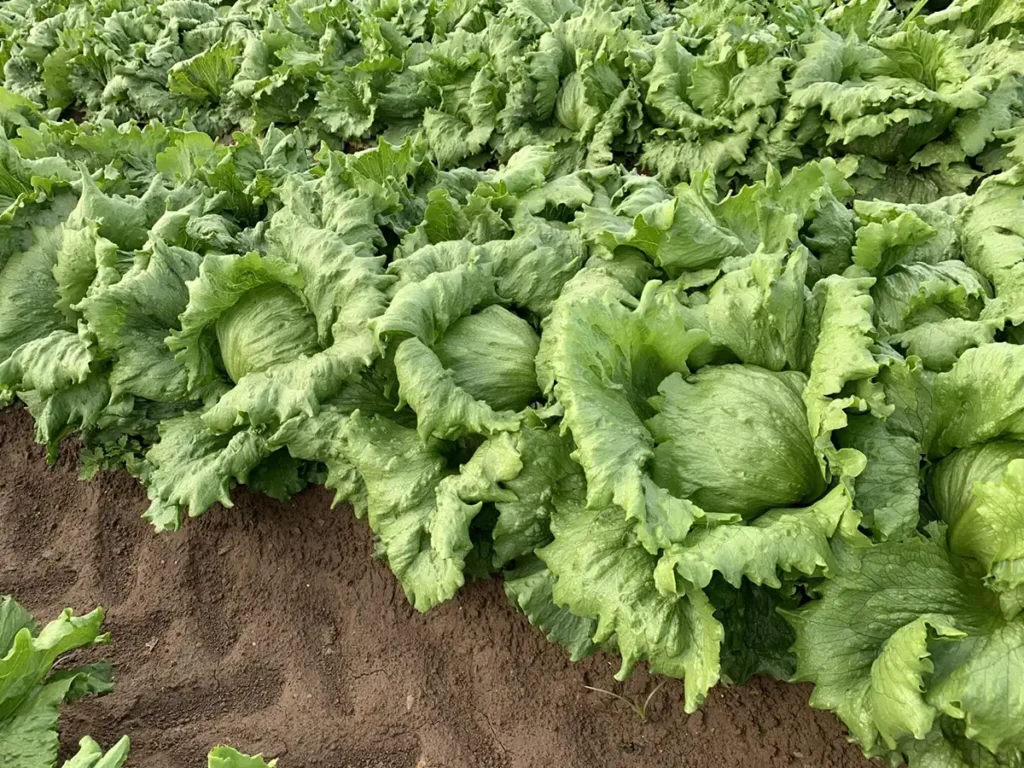
For its part, Maraldi is planning a molecular marker study to accomplish the introgression of new resistance genes for pest and diseases and to introduce new traits suitable to unfavourable climatic conditions and longer shelf life. “At Maraldi, thanks to the development of a wide genetic basis during the last decade, we are starting a molecular markers project for the deep study of these materials,” explains Zaccaria, “and to identify genes of high interest for the breeding activity. Currently our main goal is to introgress new, strong and durable resistance genes for Bremia and Fusarium, and later to identify genes involved in important field stress and commercial traits. We are sure these new approaches will improve the quality of our breeding program.”



